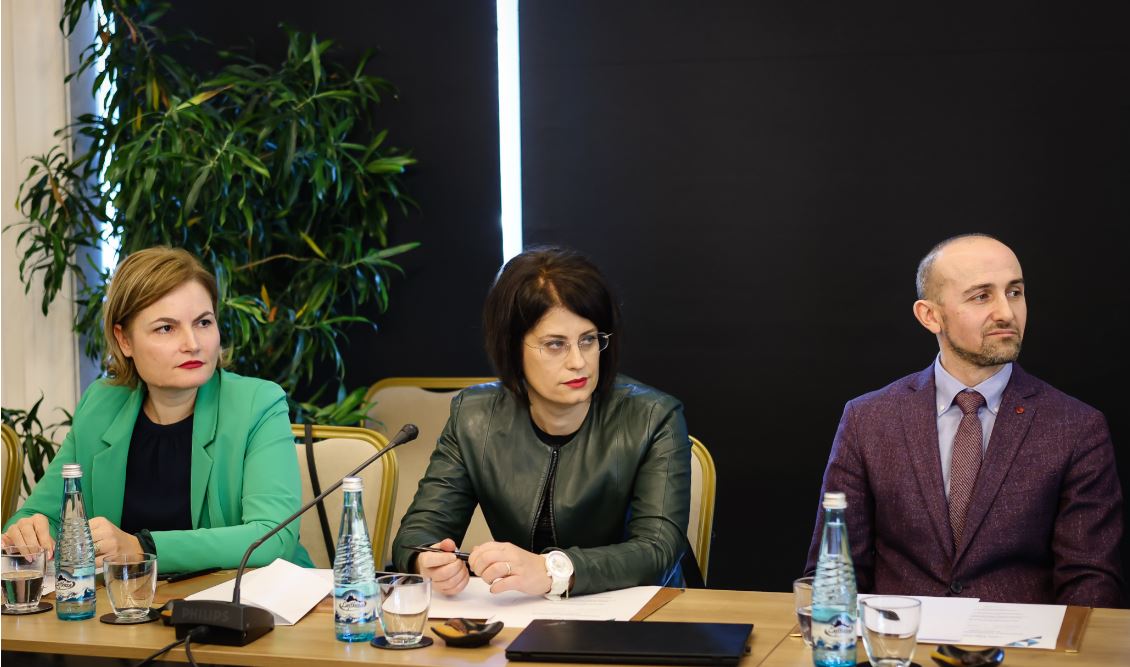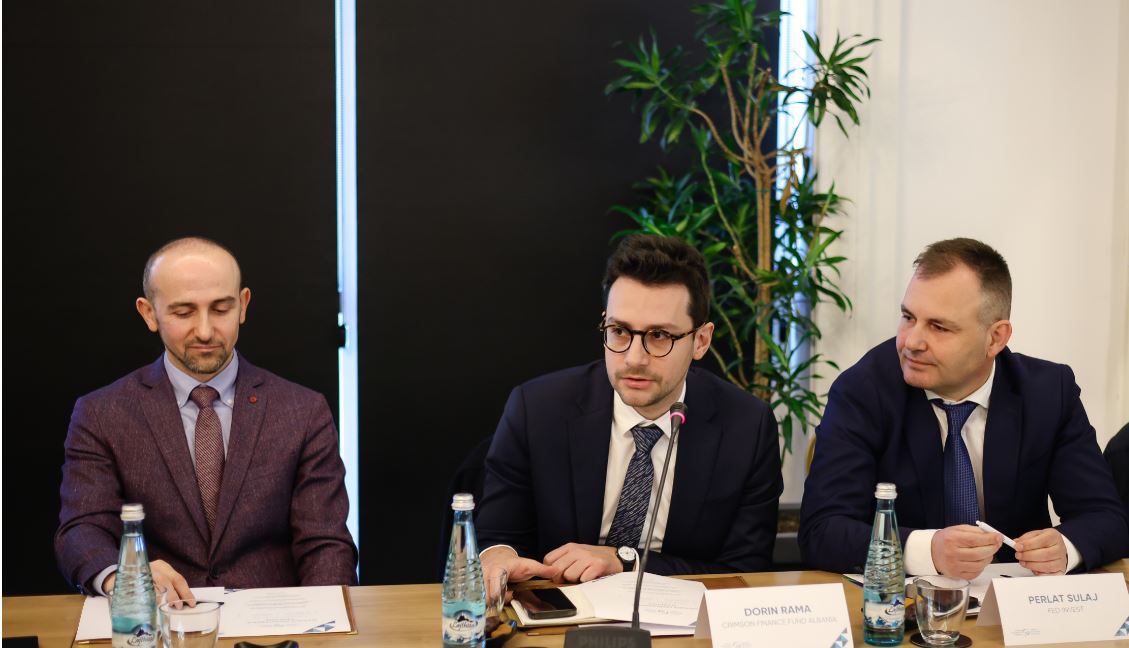Microfinance empowers Albanian citizens amidst economic uncertainty.
As Albania navigates through economic challenges, the microfinance sector emerges as a beacon of hope, offering essential financial support to citizens who find themselves underserved by traditional banking institutions. The Albanian Microfinance Association emphasizes the crucial role microfinance plays in strengthening the country's economy, promoting financial inclusion, and empowering individuals during these uncertain times.
Facing rising inflation and prices, a considerable portion of the Albanian population struggles to access financial services from conventional banks. Many individuals, unable to secure medium-sized loans, find themselves unable to make substantial investments in items such as new household appliances or furniture. Recognizing this gap, the microfinance sector intervenes to offer tailored financial solutions, ensuring that every citizen has the opportunity to improve their quality of life.
The Albanian Microfinance Association held a meeting on February 5, 2024, with economic journalists and media representatives to convey information regarding the sector's activities during 2023, as well as plans and expectations for the future.
During the meeting, the challenges facing the Albanian economy from individuals' perspectives were presented, highlighting the role of microfinance in promoting the local economy and the crucial importance of these institutions in the technological development of the financial sector and the financial education of their served individuals.
Ms. Junida Tafaj, General Secretary of the Albanian Microfinance Association, spoke about the 25-year journey of the microfinance sector in Albania, the changes and growth during these years, which are now translating into a visible success of this sector.
Ms. Arlinda Muja, President of the Albanian Microfinance Association and General Director of Kredo Finance, presented some interesting facts about the sector, even at the regional level.

Reports show a higher quality of the portfolio in the Eastern European region, where more MFIs report a PAR30 lower than 5%, while in Western Europe, one-third of financial institutions report a PAR30 higher than 10%. The quality of the portfolio for businesses is reported weaker compared to the portfolio for individuals, respectively PAR30 figures of 11% and 8%. Compared to the region, Albania ranks 9th in terms of the number of MFIs with 12 MFIs and in countries with low percentages of the volume of loans given by these institutions.On average, MFIs in the region serve a relatively wide target market. The average depth of outreach expressed as the average loan balance to GNI per capita was 56% in 2021, including exposure to business credit. For consumer credit, Kosovo has the highest loan/GNI ratio - 35% and France has the lowest ratio. Meanwhile, Albania is estimated to have an average ratio of 18%. This latter is a clear indicator that in Albania, MFIs serve a low economic stratum, and also, the served citizens are not victims of over-indebtedness as MFI companies take care not to create a higher financial burden than the possibility of repayment.
During her speech, Ms. Arlinda Muja placed emphasis on the important social role played by this sector, impacting not only through financing but also on increasing employment throughout Albania due to the geographic expansion of these institutions, emphasizing the promotion of employment among women and young employed people, ensuring a steady career growth for both pillars of the country's future.
Mr. Akan Ajdini - General Director of Iute Albania expressed about the funding structure of these institutions as well as the great need for support from the banking sector in Albania, which would place the microfinance sector in a more equal position than the banking sector in terms of financing.
Unlike banks and credit unions/financial cooperatives, non-bank financial providers rely on external funding from various types of financiers, including governments, IFIs, influential investors, and local banks.
Non-bank financial providers have a harder job finding the right balance between social mission and financial sustainability. Due to the targeted clientele and the size of the loans offered, non-bank providers must cope with higher operational and financing costs compared to traditional banks. This challenges the price of the financial services they offer.
Non-bank financial providers use a mixture of financial instruments to finance their operations and growth: debt financing, guarantees, undistributed profits/capital, and grants are the most common types used:
Debt financing is key to maintaining sustainable growth due to restrictions on deposit-taking for most types of institutions.Risk-sharing instruments, in the form of public guarantees, allow non-bank financial providers to continue to care for vulnerable clients with higher risk and offer initial finances.Grants and soft loans play an important role in supporting non-bank financial providers in the early stages of their life cycle and enable them to offer non-financial services.When non-bank financial providers are more mature and attractive to private investments, they may be able to access capital financing. To offer an overview of the financing needs of non-bank financial providers,Ms. Heriola Spahiu, General Director of NOA sh.a. spoke about the investments these institutions have made in Information Technology being institutions originating from leading countries in this field as well as continuous training of their staff to bring speed, transparency, and excellent service quality.
Women's emancipation is also noted in the noticeable increase over the years of female clients served by this sector. In this way, the microfinance sector supports small business enterprises, businesses created and developed by women, even in rural areas. This support comes not only from access to financing. But also from continuous education that is made available to micro-businesses, as Mrs. Spahiu emphasized in her speech.
Ms. Spahiu invited all journalists to join the initiative of the Albanian Microfinance Association in the campaign "Smart Borrowing", a very necessary and interesting initiative for the general public, where individuals learn how to divide their expenses, predict incomes and payments, and also how to manage a loan without being exposed more than they can afford.
Mr. Perlat Sulaj, General Director of Fed Invest SHKK explained that the economic impact in rural areas has been important for the development of these areas. There has been a decrease in recent years in funding in these areas. The latter not because the level of interest or investment by microfinance actors has fallen, but because in recent years there has been a more pronounced movement from rural to urban areas, small businesses have increased - therefore financing has increased in volume and not in number, as well as the increase in the cost of the raw material has forced some businesses to close, not seeing it reasonable to continue the business.

Key data from market research on economic expectations during 2024
What has been noticed during data processing is that 52% of those interviewed have some sources of income. Private companies individually prevail as a source of income.
27% of state employees had a secondary income from rent and from a second job in a private business. Meanwhile, only 11% of private employees had a secondary income from rent and from a second job in a private business. Meanwhile, 50% of those in pension declare that they are employed in private, and rarely even from a rent.
During 2023, 93% of individuals have had a somewhat negative or negative impact on their income.
This speaks clearly to the economic moment we are in, where one income is not enough to meet the financial needs of families. According to the survey, only 8% of those interviewed managed to save for something larger. 74% say they can close the month, but saving money is difficult. 42% have tried to reduce expenses to avoid taking loans during 2023, as they already have one. 40% of those interviewed have encountered too many difficulties and have had to take out a loan.
The situation is also confirmed by other data, where 58% have declared that they have money for necessary purchases but not for large purchases of household appliances. 16.5% cannot buy clothes and 3.4% have to be careful with food. Mainly the latter categories are pensioners.
Nearly 95% of those interviewed agreed that family expenses focus on utility bill payments. 60% of those interviewed had a car at home and needed a budget for its maintenance. Meanwhile, clothing, pharmaceuticals, health checks, children's schools, were expenditures for 50% of those interviewed. It is clear that expenses that are not touched throughout the month are those monthly fixed expenses, such as compulsory bills. Starting from expenses for clothing, some medical visits, pharmaceuticals, children's school expenses, or weekend trips, at these moments we observe their decrease, with the aim of realizing the monthly budget.
Also, the following data from the research express that individuals use 1 or more financial instruments. The respondents have simultaneously used several services, such as both a credit card and a bank loan.
But there are also those who have taken out a loan from a non-bank institution and at the same time have used the bank's products.
What is noticed better is that now people who need money, are fewer those who turn to acquaintances, only 16% of them still consider debt between acquaintances, the rest turn to institutions.
The future remains uncertain and to avoid surprises in family finances, individuals have decided not to make medium or large investments. Over 80% of those interviewed do not intend to make purchases for furniture, cars, electronic equipment, or to make major renovations in the home.

0 comments